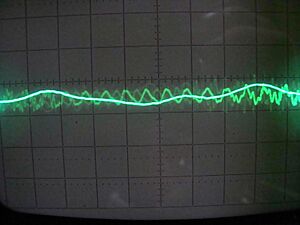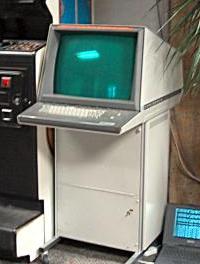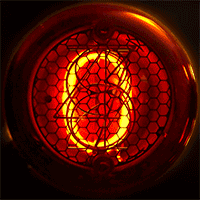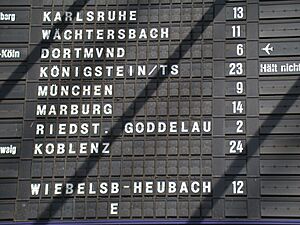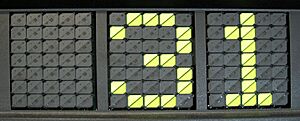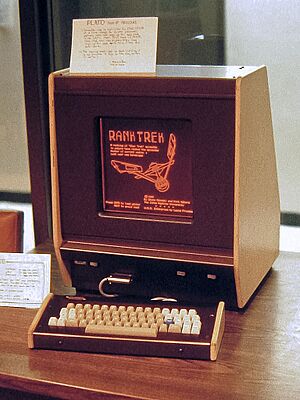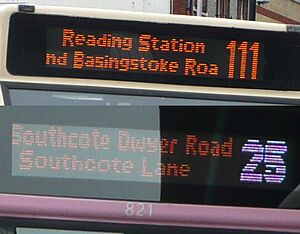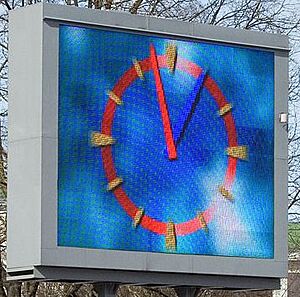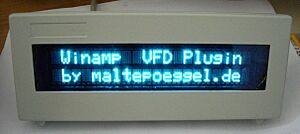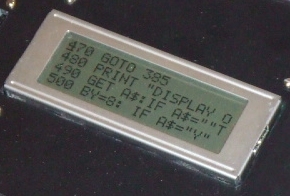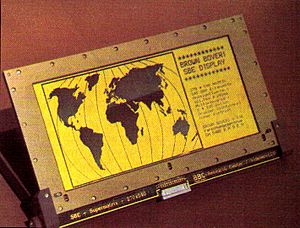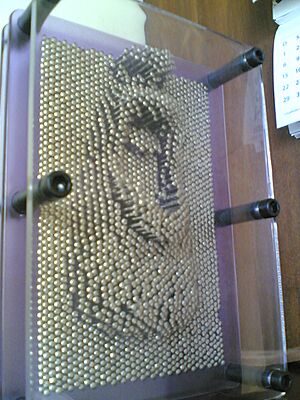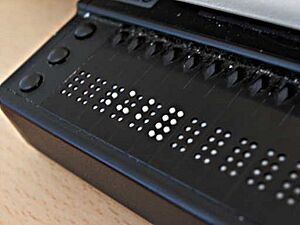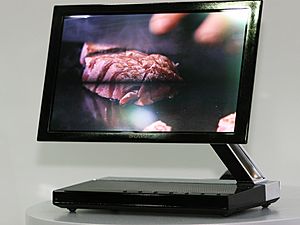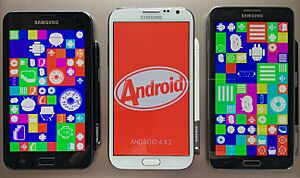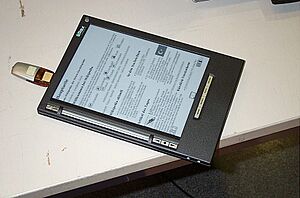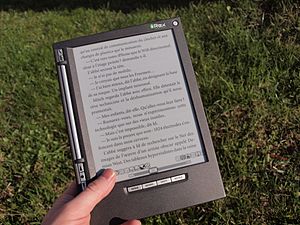History of display technology facts for kids
Display devices are super cool screens that show us pictures, videos, and text. They started out as simple machines that used electricity to move little flags or flaps to show words, like on old train station boards. Over time, they became amazing electronic screens that can show full-color, moving 3D images!
Early on, devices used solenoids to control tiny flags. These were great for showing things like stock prices or train times. Then came the cathode ray tube (CRT). This was the main type of screen for many years. But now, we have flat screens like plasma displays, LCDs, and LEDs.
Thanks to tiny electronic parts like microprocessors and integrated circuits, screens can now have millions of tiny dots called pixels. This lets them show detailed graphics and videos.
Contents
- Cathode Ray Tube (CRT)
- Nixie Tube Display
- Flip-Flap or Disc Displays
- Monochrome Plasma Display
- LED Display
- Vacuum Fluorescent Display
- Twisted Nematic Field Effect LCD
- Electroluminescent Display (ELD)
- Super-Twisted Nematic LCD
- Pin Screen
- Thin Film Transistor LCD
- Digital Light Processing (DLP)
- Full-Color Plasma Display
- Organic Light-Emitting Diode (OLED)
- Electronic Paper
- See also
Cathode Ray Tube (CRT)
One of the first electronic screens was the cathode-ray tube (CRT). It was shown to the public in 1897 and sold in stores by 1922. A CRT works by shooting a beam of tiny particles called electrons onto a screen coated with a special material called phosphor. When the electrons hit the phosphor, it glows, making a picture.
The first CRTs only showed one color, usually green or white. They were used in tools like oscilloscopes and early black and white television sets. The first color CRT came out in 1954. For more than 50 years, CRTs were the most popular screens for TVs and computer monitors. But in the 2000s, flat LCD screens started to take their place.
A special type of CRT was the storage tube. Unlike regular CRTs that needed to be constantly refreshed, storage tubes could hold an image on the screen for a long time. In 1968, a company called Tektronix made the Direct-view bistable storage tube. These were used a lot in oscilloscopes and early computer terminals.
Early Monochrome CRTs
The first CRTs, like the one from 1922, showed images in just one color. They were often used to display scientific data or simple black and white TV shows.
Color CRTs
In 1954, the first color cathode ray tube was made. This was a huge step forward for color television.
Direct-View Bistable Storage Tube
The Direct-View Bistable Storage Tube (DVBST) was invented in 1968. It could keep images on the screen without needing constant updates. It used an electron beam that could be turned off to draw pictures. DVBSTs were used in early computer screens that drew lines (called vector displays) and in oscilloscopes.
Nixie Tube Display
The Nixie tube was invented in 1955. It's a cool-looking tube that can show numbers using glowing orange light.
Flip-Flap or Disc Displays
These displays use small flaps or discs that flip over to show numbers or letters. Split-flap displays, invented in 1957, were often seen in train stations. They made a cool clicking sound as the numbers changed.
The Flip-disc display came out in 1961. These displays use small, round discs that flip to show different colors, often used for signs.
Monochrome Plasma Display
The first plasma displays, which showed only one color, were created in 1964. They used tiny cells filled with gas that glowed when electricity passed through them.
LED Display
LED displays first appeared in 1968. LEDs are tiny lights that use very little power. They are used in everything from small indicator lights to giant outdoor screens.
Vacuum Fluorescent Display
The Vacuum fluorescent display (VFD) was developed in 1967. These displays show bright, clear numbers and letters, often with a blue-green glow. You might have seen them in old VCRs or car radios.
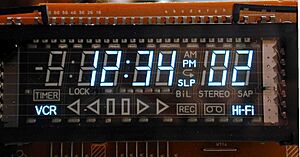
Twisted Nematic Field Effect LCD
The first LCD using the Twisted nematic field effect came out in 1971. LCDs work by using liquid crystals that can block or let light pass through, creating images. These early LCDs were often used in calculators and digital watches.
Electroluminescent Display (ELD)
Electroluminescent displays (ELD) were developed in 1974. These displays create light by sending electricity through a special material.
Super-Twisted Nematic LCD
In 1984, the Super-twisted nematic display (STN LCD) was invented. This was an improvement on earlier LCDs. It allowed for much clearer and higher-resolution screens, with up to 540x270 pixels.
Pin Screen
A pin screen is a fun, old-fashioned display that uses a bed of movable pins to create 3D shapes.
In 1969, a special type of pin screen was developed for people who are blind. This is called a Braille display. It uses pins that pop up and down to create Braille characters, allowing users to read text by touch.
Thin Film Transistor LCD
Color Thin-film-transistor liquid-crystal displays (TFT LCDs) arrived in 1986. These are the basis for most modern flat-screen TVs and computer monitors. TFTs allow each pixel to be controlled individually, leading to much better picture quality.
Digital Light Processing (DLP)
Digital Light Processing (DLP) is a technology invented in 1987. It uses tiny mirrors to create images. While the technology was invented by Texas Instruments, the first projector using DLP was released in 1997. DLP is often used in movie theater projectors and home theater systems.
Full-Color Plasma Display
Full-color plasma displays became available in 1995. These screens offered large sizes and vibrant colors, making them popular for big-screen TVs before LCDs became dominant.
Organic Light-Emitting Diode (OLED)
Organic light-emitting diode (OLED) displays were introduced in 2003. OLEDs are special because each pixel creates its own light. This means they can show perfect black colors and have amazing contrast.
Also in 2003, Active-matrix OLED (AMOLED) displays were developed. These are very common in smartphones and high-end TVs today because they are thin, flexible, and have brilliant colors.
Electronic Paper
Electronic paper, or e-paper, came out in 2004. These displays are designed to look like real paper and are easy to read in bright sunlight. They are mostly used in e-readers because they use very little power and don't strain your eyes.
See also
- Display device


